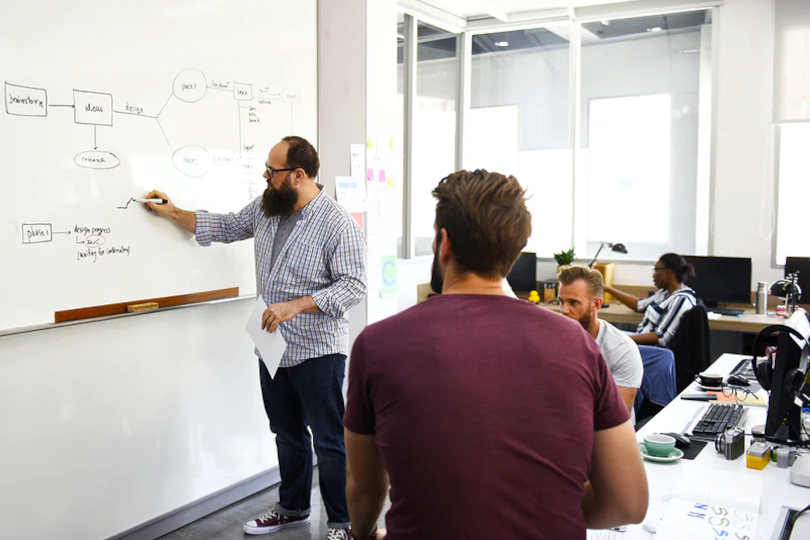[ad_1]
Each enterprise’s relationship to development has shifted wildly within the final three years. In accordance with the U.S. Census Bureau, 6 % of firms canceled their plans to develop in 2020, and 9.7 % hit “pause” on development. So, what occurs now that we’ve entered a brand new part? Ought to companies be pushing for development once more?
To grasp the reply, we’ve got to look extra carefully at how firms have been pondering and feeling about development.
![]()
First, the explanation for hitting the pause button has been continued financial insecurity. The financial downturn pressured companies to deal with effectivity, lower prices and prioritize money circulation above all else. This mindset continues to be guiding enterprise leaders right this moment.
Moreover, with the intention to not less than survive the pandemic, companies needed to adapt quickly. They needed to develop new methods to succeed in clients, translate their companies to digital ones, rethink security and redefine what their manufacturers regarded like and stood for. Companies which have survived typically don’t resemble what they as soon as have been.
Regardless of what we’ve been by way of and the way we’ve modified, development is all the time inseparable from enterprise. It defines us. Put up-pandemic development is an enormous precedence for a lot of companies. They should get better misplaced revenues, seize new alternatives and spend money on the client expertise in order that they’ll construct loyalty and belief because the financial system recovers. The query is: how?
Associated: The World Is Altering and Your Model Is Dying. Right here’s The best way to Create and Champion an Evolving Model

What practices ought to companies maintain from pandemic occasions?
There are nonetheless pandemic-era enterprise practices that we should always carry over into the brand new period. We’ve realized lots in a brief area of time, and far of the data that we acquired will proceed to be helpful. Essentially the most resourceful leaders will be capable to repurpose pandemic classes for the way forward for their firms.
As an illustration, clever leaders will keep in mind to spend money on worker coaching and improvement. They are going to hearken to their workforce members and encourage open communication and suggestions as a result of they understand it helps them transfer in the correct path. In addition they know that digital instruments can enhance effectivity and collaboration in each good occasions and dangerous.
Nonetheless, a number of the practices we relied on throughout the pandemic undoubtedly have to be ended. The unique deal with cost-cutting measures, as an example, now not is smart. We’ve gotten right into a behavior of hunkering down and prioritizing core processes; now could be the time to let the secondary and tertiary considerations again in.
We have to cease relegating customer support and satisfaction to the “nice-to-have” bucket and begin recognizing how vital it’s to success. Earlier than, we typically didn’t have the cash or the time to speculate correctly in instruments, worker coaching or improvement. Now that we do, we have to spend money on something that may empower our groups to set objectives and innovate with confidence.
Associated: 5 Classes the Pandemic Has Taught Entrepreneurs

How companies can discover their North Star after the pandemic
The pandemic period has taught us some worthwhile classes and given us a brand new set of priorities. Take into account buyer expertise because the North Star of post-pandemic enterprise development. Enterprise leaders want to concentrate to the tendencies which are at present rising as a result of they exhibit what shoppers are pondering and the way they’re feeling. Listed here are 3 ways to perform that:
1. Deal with well being and wellness wants
The pandemic could also be winding down and we could also be coming into a brand new period, but when the final three years have taught us something, it’s that well being issues. In accordance with McKinsey & Firm, the worth of the worldwide health market exceeds $1.5 trillion, and it’s anticipated to develop between 5 % and 10 % yearly.
Persons are actually attempting to form their lives round their well-being and inserting larger emphasis on preventive well being care, wholesome consuming and health. This has led to an elevated demand for well being and wellness merchandise, dietary supplements, health apps and companies, self-care instruments, therapeutics and every other health-related service.
2. Discover native distributors
Progress isn’t essentially about increasing globally. With the pandemic bringing international commerce to a standstill, many individuals have turned to domestically sourced merchandise to assist native companies and scale back their environmental footprint.
As a result of the significance of sustainability has turn into extra appreciated by the general public — in keeping with a report by Havas Group Worldwide, 73% of shoppers consider that manufacturers have a accountability to behave for the great of society and the Earth — clients are in search of sustainable services. This consists of demand for eco-friendly packaging and sustainable supplies. This development will possible proceed as we turn into extra conscious of the affect of our purchasing selections.
Associated: What Is Sustainability in Enterprise?
3. Ask inquiries to and about clients
In accordance with a report by Salesforce, 56 % of consumers count on that each one of their provides be customized to them. As a result of this quantity will solely proceed to develop, firms should deal with understanding buyer wants, offering a seamless consumer expertise and delivering worthwhile services.
With a view to know what “worthwhile” means to clients, ask questions. What buyer wants should not being met proper now? What customer-centric methods might be applied to offer a greater expertise? How can knowledge be used to make a greater resolution? By specializing in the client expertise, we are able to maintain the North Star in our sights and let it set a transparent path for post-pandemic development.
[ad_2]


